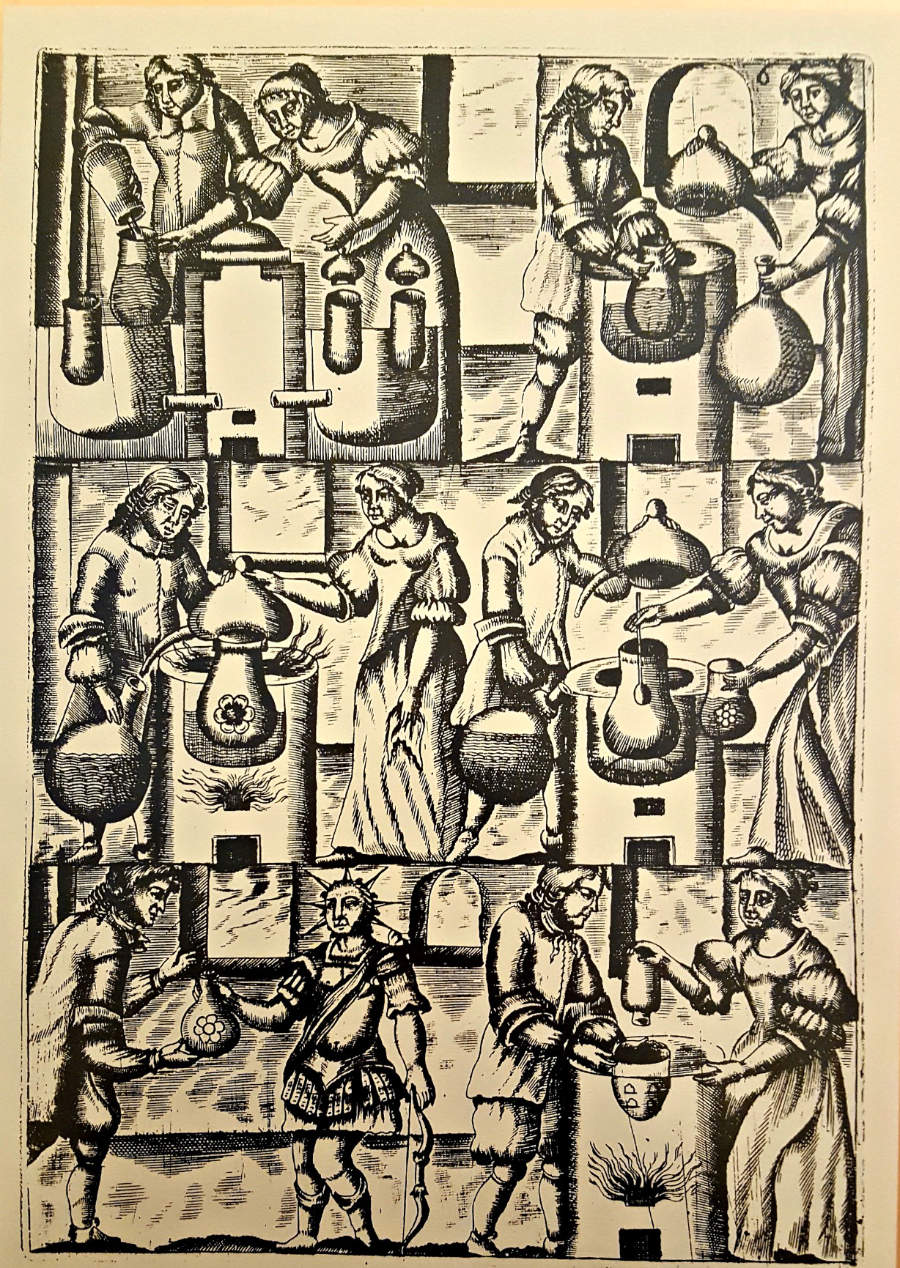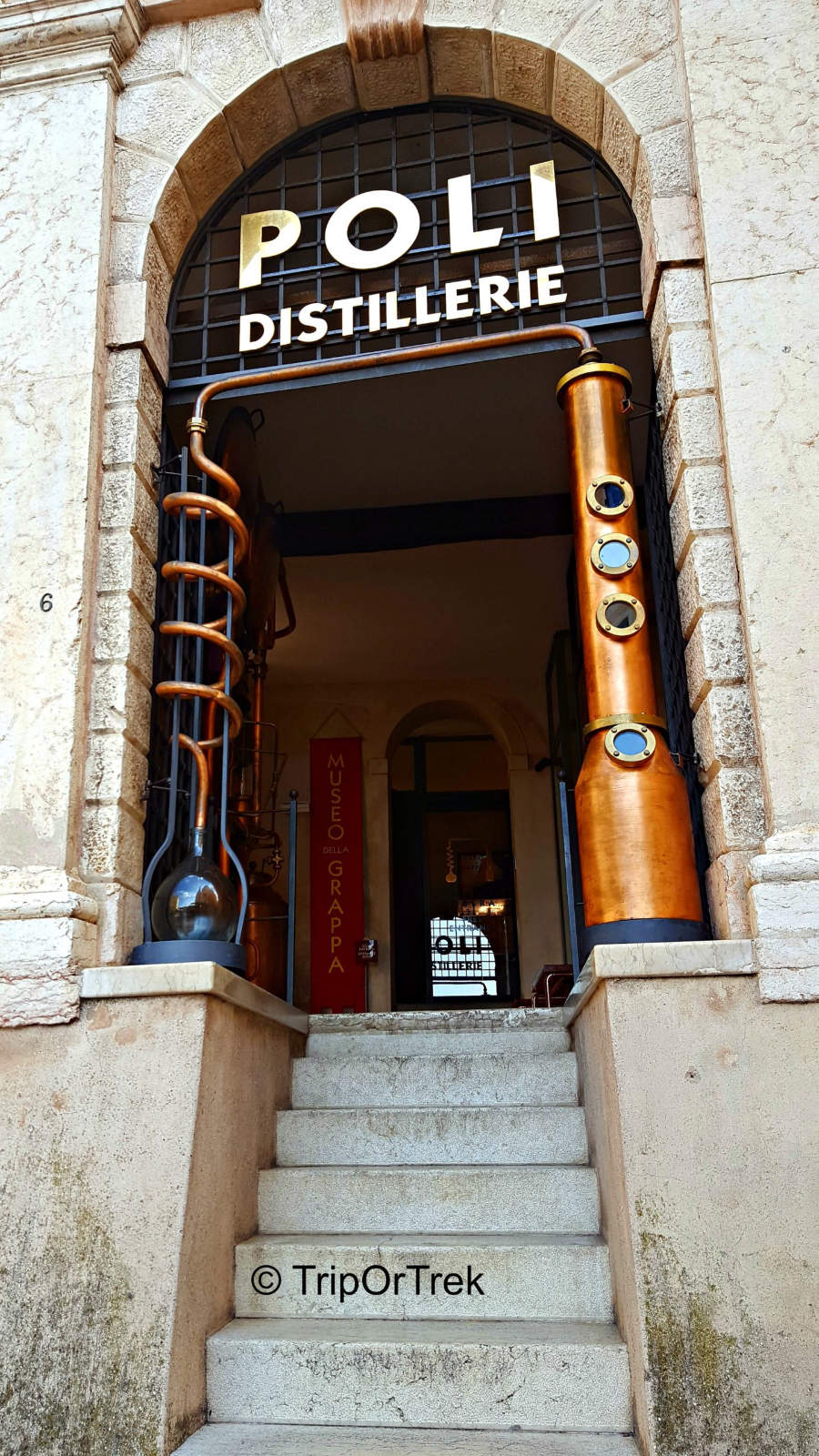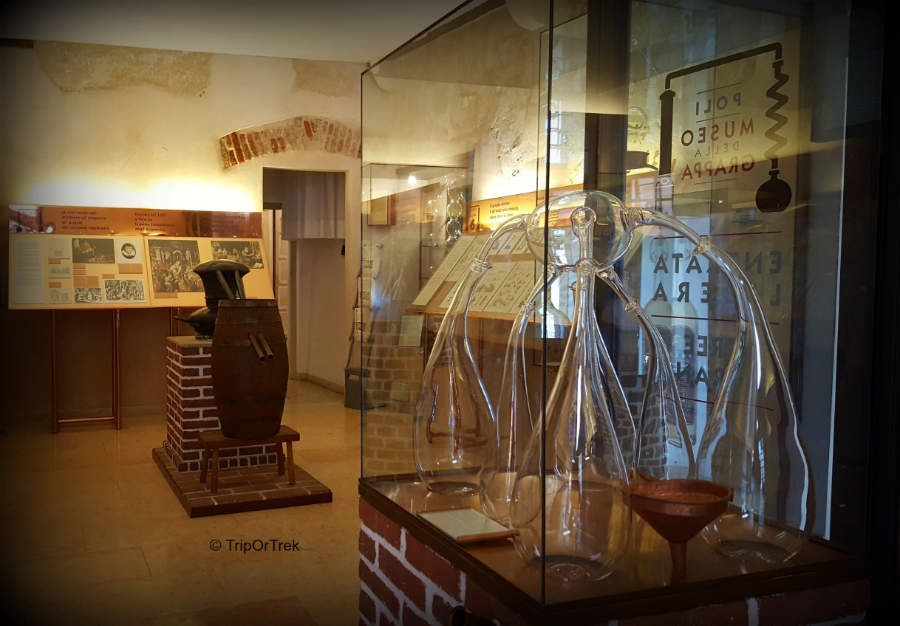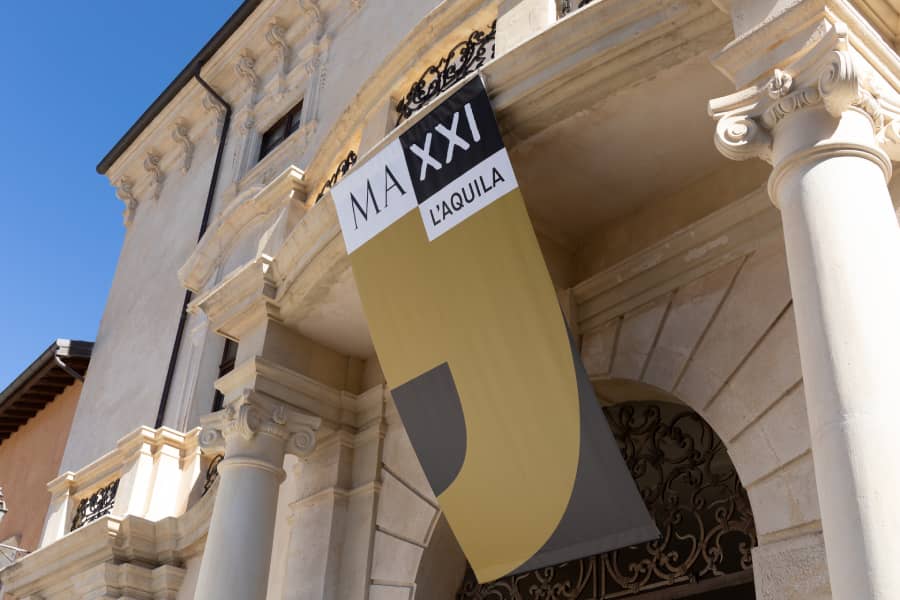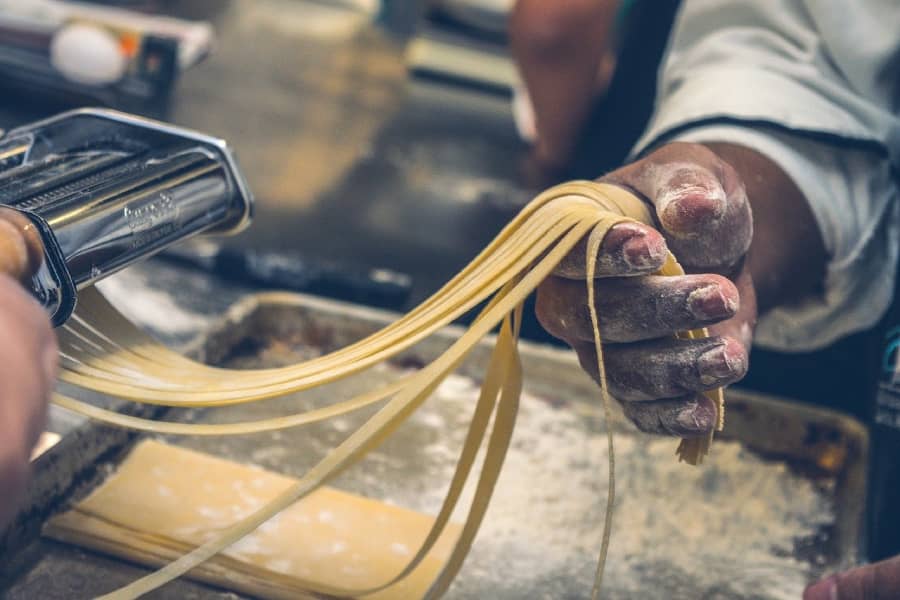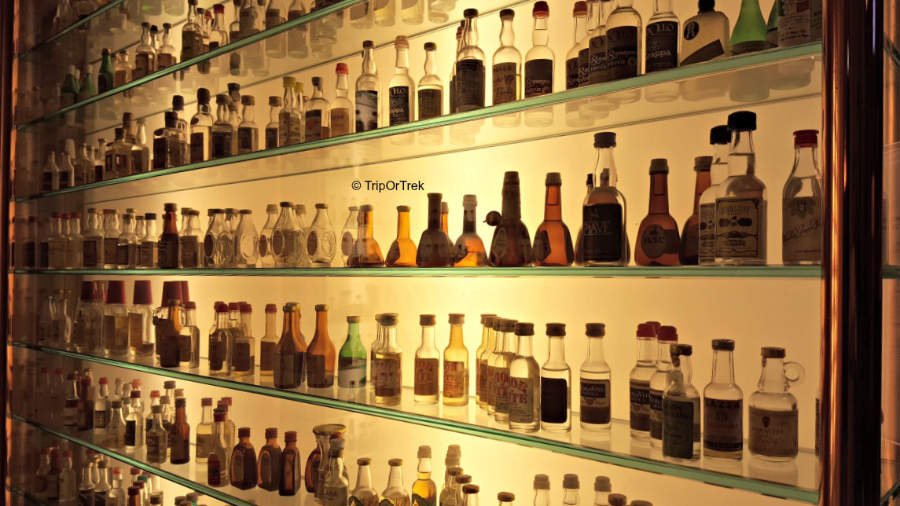
The art of distillation is old and it dates back to the time in which the alchemy it merged with the taste, giving rise to a crystalline distillate and with strong flavor: the grappa.
Born from the soul of the grape and expertly worked by man, the grappa, was known by the Egyptians, Greeks, Romans, and especially by the Arabs. The first, though, that have tried to organize knowledge in the field of distillation were the doctors of the School of Salerno, establishment, founded in the ninth century A.D. on the homonymous gulf, which, combining the knowledge of the cultures Greek, Arabic and Latin, they experienced the process to create schnapps.
In Veneto, particularly in Bassano del Grappa, destination of our journey, the distillation of grape pomace has an old tradition. The name “grappa” derives from the dialect “Graspo” which means bunch of grapes, the raw material of the distillate that, in the past, was often produced at home, with alembics or makeshift equipment, not just as a liqueur, but also as a folk medicine.
It was used to combat a multitude of diseases, but especially against the flu, colds and even cholera. In fact, when in the sixteenth century it spread the plague in northern Italy, the doctors began to prescribe strong alcoholic drinks that gave to the sick a temporary feeling of well-being and the doses were so high as to raise the dead.
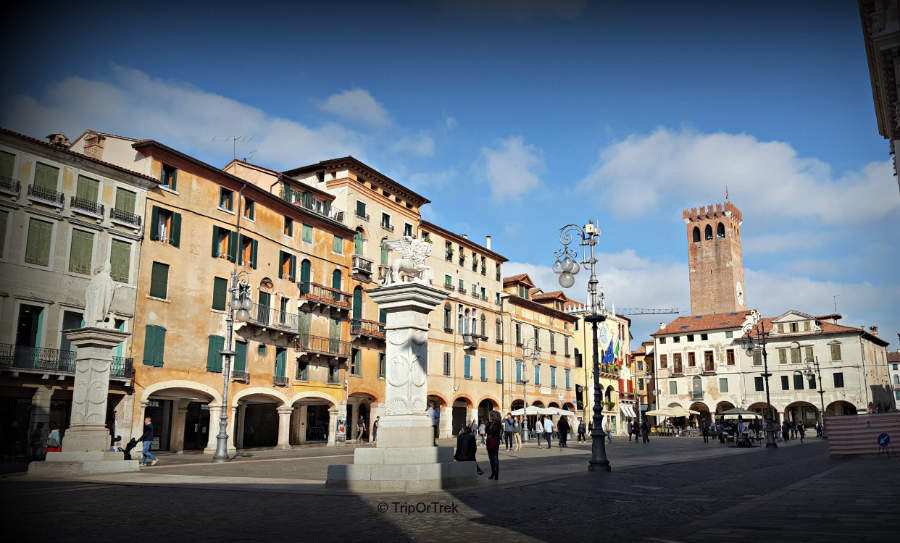
How I Discovered this story on the grappa? Visiting the Poli Museum in Bassano del Grappa!
Located in the heart of the city, next to the historic Ponte Vecchio, in the ancient palace Delle Teste, the museum is open every day from 9 to 19.30, and is composed of five rooms. In the first room, the visitor can discover the history of the distillates, from the elixirs of long life, to the distillates produced in Venice in 1600. In the second, however, you can see faithful reproductions of stills and a collection of ancients and moderns texts on grappa.
The third room is dedicated to the work of the Poli family, owners of the museum and of a distillery in Schiavon, a small town in the province of Vicenza, while the fourth and the fifth hall of the palace are reserved for the sensory approach: you can see not only an extensive collection of bottles from the first half of the twentieth century, but, thanks to an olfactometer, you can also smell twenty different types of distillates which eventually can be tasted in the shop of the museum.
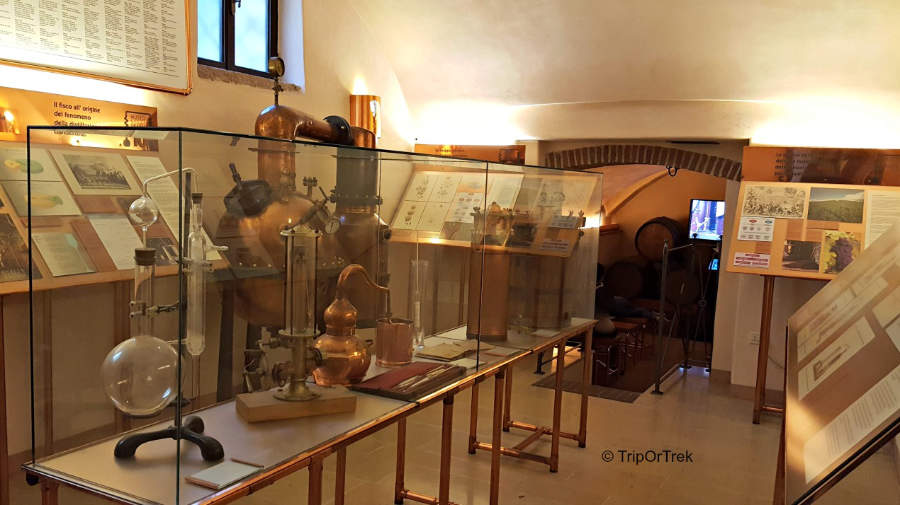
How was the grappa of the past compared to what we drink today? In ancient times schnapps was a drink for the poor. In fact the rich were drinking the wine leaving the skins and grape stalks to the servants, who were lengthening them with water, giving rise to a light, but still alcoholic, wine.
In the past the grappa was white, dry, strong, searing and conquered a place in history during the Great War because it became the “liquid of courage” drunk by the soldiers before facing the battles. Today, instead, thanks to the introduction of industrial tools for distillation, its flavor is more mellow.

Born from the soul of the grape and expertly worked by man, the grappa, served in small pot-bellied glasses, is savored in small sips and I couldn’t finish my visit to Poli Museum without tasting a distillate, because as the proverb says: “The grappa purifies, disinfects and sanctifies”.
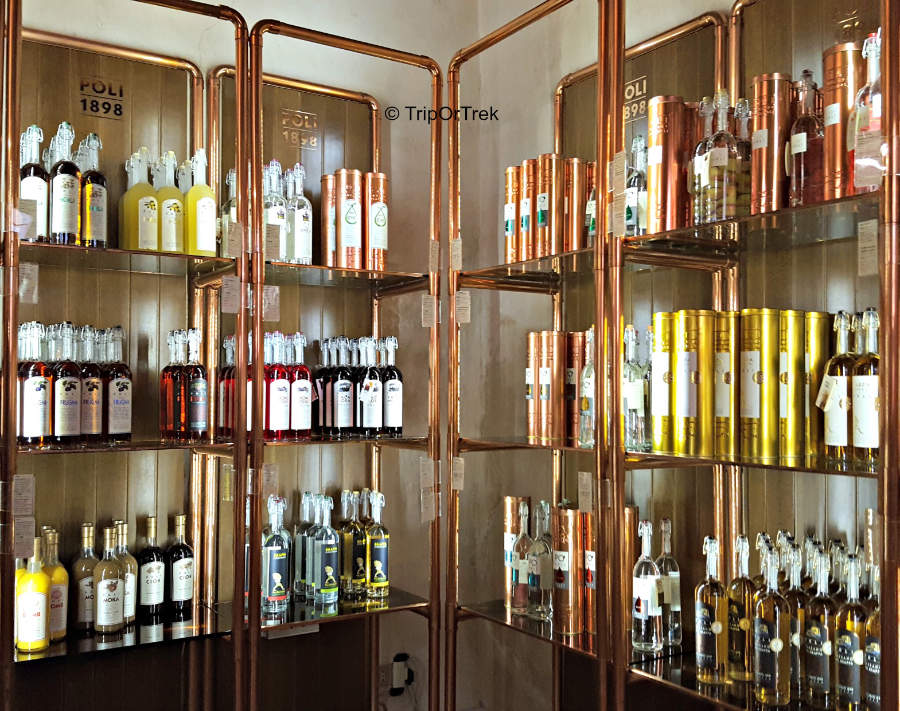

Viaggio e racconto il tuo territorio scrivendo di turismo, marketing territoriale e storytelling nel mio blog TripOrTrek



